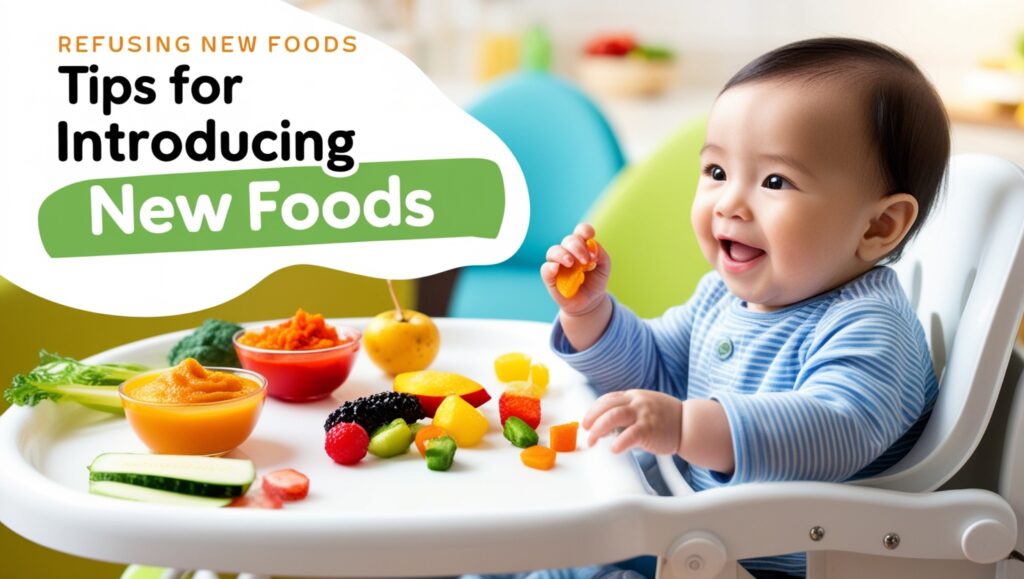Starting solids is a significant milestone in your baby’s development. Single-ingredient purees offer a safe, nutritious, and gentle introduction to new flavors and textures. This article explores everything you need to know about preparing these simple meals, ensuring your baby enjoys a healthy and happy start to their food journey.
Why Start with Single-Ingredient Purees?
Single-ingredient purees are the ideal way to introduce solids because:
- Allergy Detection: Testing one ingredient at a time helps identify any food sensitivities or allergies.
- Flavor Introduction: Babies get a chance to taste each food individually, building a preference for natural flavors.
- Nutrient Focus: These purees ensure your baby gets the full benefit of each ingredient’s vitamins and minerals.
When and How to Start Solids
Timing:
Most babies are ready to begin solids at around 4-6 months. Look for these readiness signs:
- Can sit up with support.
- Shows interest in food and tries to grab it.
- Has good neck and head control.
How to Begin:
- Choose a quiet, distraction-free environment.
- Offer solids after breastfeeding or formula to keep the experience enjoyable.
- Begin with a teaspoon of puree, increasing as your baby becomes accustomed.
Simple Single-Ingredient Puree Recipes
Avocado Puree
- Ingredients: 1 ripe avocado.
- Instructions:
- Cut the avocado in half and remove the pit.
- Scoop out the flesh and mash or blend with a little water or milk until smooth.
Zucchini Puree
- Ingredients: 1 medium zucchini.
- Instructions:
- Wash, peel, and chop the zucchini.
- Steam or boil until tender, then blend into a smooth puree.
Banana Puree
- Ingredients: 1 ripe banana.
- Instructions:
- Peel the banana and mash it thoroughly with a fork. No cooking is required!
Pumpkin Puree
- Ingredients: 1 cup diced pumpkin.
- Instructions:
- Steam or roast the pumpkin pieces until soft.
- Blend with water or breast milk until smooth.
Pro Tips for Making Baby Purees
- Use Fresh, Organic Ingredients: Prioritize fresh produce to avoid harmful chemicals or pesticides.
- Cook Thoroughly: Steam, boil, or roast ingredients until they’re soft for easier digestion.
- Blend to the Right Consistency: For younger babies, make sure the puree is entirely smooth.
- Cool Before Serving: Allow purees to cool to a safe temperature before offering them.
Introducing Solids Safely
- Follow the 3-Day Rule: Wait three days before introducing a new ingredient to monitor for allergic reactions like rashes, diarrhea, or vomiting.
- Avoid High-Allergy Foods at First: Stay away from honey, eggs, nuts, and shellfish until your baby is older.
- Start Mild and Sweet: Babies naturally enjoy mild, sweet flavors like sweet potatoes, carrots, and apples.
Creative Serving Ideas
Once your baby is comfortable with single-ingredient purees, consider serving them in creative ways:
- Use small, colorful baby bowls to make meals visually appealing.
- Let your baby hold a spoon to engage them in the process.
- Play soft music during mealtime to create a calming atmosphere.
Common Challenges & How to Overcome Them
1. My baby rejects the puree.
Solution: Try again in a few days. Babies often need repeated exposure to accept a new food.
2. My baby makes a mess while eating.
Solution: Embrace the mess—it’s part of the learning process! Use bibs and washable mats.
3. I’m unsure about portion sizes.
Solution: Start small (1-2 teaspoons) and increase gradually based on your baby’s appetite.
Storage and Meal Prep Tips
- Freeze in Small Portions: Use ice cube trays to freeze purees in small servings.
- Label and Date: Always label containers with the food type and preparation date.
- Thaw Safely: Reheat purees in a warm water bath or microwave, stirring thoroughly to avoid hot spots.
What’s Next? Expanding Your Baby’s Palate
After mastering single-ingredient purees, mix and match flavors to create new combinations, such as:
- Pear + Spinach.
- Pumpkin + Apple.
- Sweet Potato + Carrot.
These combinations add variety and nutrients while preparing your baby for chunkier textures.
FAQs About Starting Solids
Q: How often should I feed my baby purees?
A: Begin with one meal per day and gradually increase to two or three as your baby adapts.
Q: Should I add salt or sugar to purees?
A: No. Babies don’t need added salt or sugar. Keep it natural and wholesome.
Q: What if my baby doesn’t like the food?
A: Be patient and keep trying. It can take 8-10 attempts for a baby to accept a new food.
Key Takeaways
Starting solids with single-ingredient purees is an exciting step for both you and your baby. Focus on simple, fresh ingredients to build a foundation of healthy eating habits. With time, patience, and love, your little one will grow to enjoy mealtime as a delightful part of their day.
Explore more baby recipes and tips at BabyFeasts.com!

